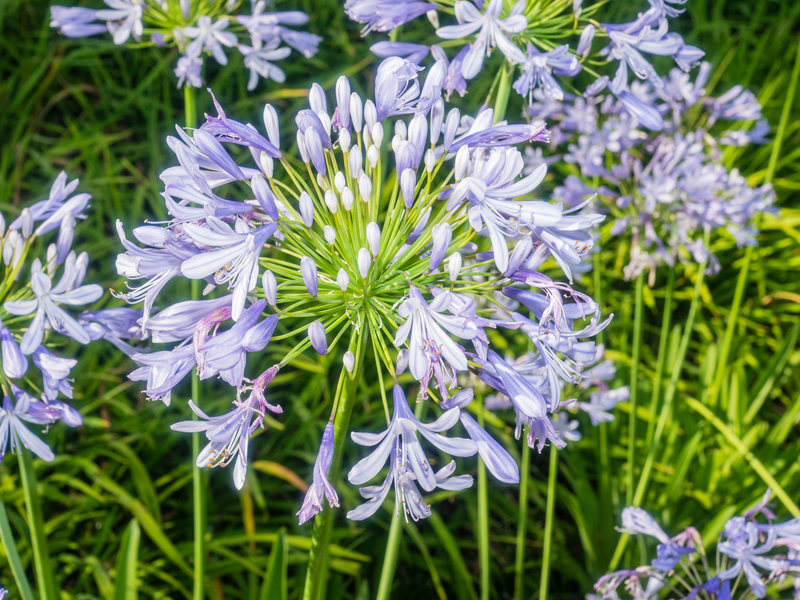Gardening your way to a climate-friendly future
Posted on 24/06/2025
Gardening is more than just a relaxing hobby; it is a practical solution to address global environmental challenges. By cultivating your own green spaces, you can actively participate in building a climate-friendly future for yourself and your community. In this guide, we'll explore innovative ways to make your gardening practices more sustainable, benefiting both the planet and generations to come.
Why Gardening Matters in Combating Climate Change
Our planet is facing unprecedented environmental threats, including climate change, habitat loss, and biodiversity decline. While these issues may seem daunting, gardening for a climate-friendly future offers tangible benefits:
- Carbon Sequestration: Plants capture and store carbon dioxide, reducing greenhouse gases in the atmosphere.
- Biodiversity Boost: Diverse gardens support a variety of pollinators, insects, and wildlife.
- Reduced Waste: Home gardens encourage composting and lessen reliance on commercial produce with heavy packaging and transport emissions.
- Resilient Ecosystems: Native gardens and permaculture principles create self-sustaining landscapes that adapt to climate changes.
With every plant you nurture, you are sowing the seeds for climate resilience and inspiring others to join the green movement.

Principles of Climate-Friendly Gardening
Transitioning to a climate-conscious garden involves more than just growing flowers and vegetables; it's about adopting eco-friendly practices that minimize your environmental impact. Here are some guiding principles:
1. Choose Native and Drought-Resistant Plants
Native species are adapted to your region's climate, requiring less water, fertilizer, and pesticides. By incorporating drought-tolerant and climate-resilient varieties, you conserve resources and support local ecosystems.
- Research plants indigenous to your area
- Integrate wildflowers, grasses, and shrubs suited to local conditions
- Reduce turf grass areas in favor of mixed plantings
2. Build Soil Health Organically
Healthy soil is the foundation of a sustainable garden. Avoiding chemical fertilizers and pesticides enhances soil microbes, stores more carbon, and supports robust plant growth.
- Apply compost and organic mulch to enrich the soil
- Rotate crops to maintain nutrient balance
- Encourage earthworms and beneficial insects
3. Practice Water-Wise Gardening
Water conservation is increasingly critical as droughts become more frequent. Smart watering techniques ensure your garden thrives while minimizing waste.
- Install drip irrigation or soaker hoses
- Collect rainwater in barrels
- Mulch heavily to retain soil moisture
4. Promote Biodiversity and Wildlife Habitats
A climate-friendly garden is buzzing with life! By providing shelter, food, and water for local creatures, your garden becomes a thriving habitat that aids climate adaptation.
- Plant a variety of flowering species to attract pollinators
- Install bird baths, feeders, and bee hotels
- Create undisturbed spaces for insects and small mammals
5. Reduce, Reuse, and Recycle in the Garden
Embrace a circular economy by finding creative ways to reuse materials and reduce your carbon footprint:
- Compost kitchen and yard waste
- Repurpose containers and garden structures
- Opt for secondhand or recycled gardening tools
Practical Steps to Make Your Garden More Climate-Friendly
Plan Your Garden with the Climate in Mind
Start by observing your local environment - rainfall patterns, sunlight, soil types, and existing vegetation. Use this knowledge to design a landscape that flourishes naturally with minimal input.
- Group plants with similar needs together to optimize watering and care
- Strategically place trees to shade your home, lowering energy use during hot months
- Utilize hedges or windbreaks to protect sensitive plants and conserve moisture
Grow Your Own Food Sustainably
Homegrown produce has numerous benefits: saves money, reduces food miles, and puts you in control of what goes into your food. Consider these sustainable options:
- Rotate crops each season to maintain soil fertility
- Try companion planting to boost plant health and deter pests
- Cultivate perennial vegetables and fruits for long-lasting yields
Embrace Low-Carbon Gardening Techniques
Machinery and synthetic inputs increase the carbon footprint of traditional gardening. Instead:
- Dig with hand tools instead of gas-powered equipment
- Spread organic mulch to suppress weeds, feed soil, and sequester carbon
- Use green manure or cover crops to fix nitrogen and enrich organic matter
Composting: Turning Waste into Gold
Composting transforms kitchen scraps and yard debris into nutrient-dense fertilizer, diverting waste from landfills and reducing methane emissions.
- Set up a simple bin or pile in your backyard
- Combine "greens" (fruit, veggie scraps) and "browns" (leaves, straw) for best results
- Apply finished compost to boost soil health and plant resilience
Integrate Trees and Perennials for Lasting Impact
Trees play a crucial role in gardens for a sustainable future, providing shade, wind protection, habitats, and enduring carbon sinks.
- Include shade trees or food-producing trees (e.g., apple, nut trees) in your design
- Mix in native shrubs and perennial flowers for structure and year-round interest
- Avoid invasive species that disrupt local ecosystems
Climate-Smart Gardening Trends & Innovations
Regenerative Gardening
Regenerative gardening takes sustainability a step further by restoring soil health, increasing biodiversity, and drawing down atmospheric carbon. Techniques include:
- No-till or low-till gardening to protect soil microbes
- Permanent ground covers and living mulches
- Layered "forest gardens" that mimic natural ecosystems
Permaculture Principles
Permaculture designs aim to work with nature, fostering self-sustaining systems that require little maintenance or outside inputs.
- Create swales or rain gardens to manage water naturally
- Plant guilds that support each other in pests, fertility, and structure
- Close the loop by recycling all nutrients and wastes on site
Urban Gardening for Climate Action
You don't need a large yard to make a big impact! Urban gardening initiatives, such as community gardens, rooftop plantings, and vertical farms, make climate-positive gardening accessible to city dwellers.
- Green roofs absorb CO2 and reduce building energy use
- Balcony or windowsill herb gardens cut down on store-bought packaging
- Community plots foster knowledge-sharing and collective climate action
Overcoming Common Challenges in Climate-Friendly Gardening
Managing Pests Naturally
Avoid synthetic pesticides that harm pollinators and the wider ecosystem. Instead, opt for integrated pest management (IPM) by:
- Attracting beneficial insects such as ladybugs and lacewings
- Hand-picking pests or using natural repellents like neem oil
- Encouraging birds and bats with nesting boxes
Adapting to Changing Weather Patterns
Climate change brings new stresses--erratic rainfall, heatwaves, frost. Mitigate these by:
- Selecting resilient, locally adapted plant varieties
- Building raised beds for better drainage and frost protection
- Installing shade cloths or creating microclimates with smart plant placement
Reducing Synthetic Inputs
Modern gardening often relies on synthetic fertilizers and peat-based compost. Reduce dependency by:
- Using homemade compost, leaf mold, or well-rotted manure
- Trying natural pest control remedies and green manures
- Prioritizing peat-free soil amendments

Engaging Your Community for Greater Impact
Transitioning to a climate-friendly gardening approach is even more powerful when shared:
- Organize local seed swaps to increase plant diversity
- Host workshops on composting, water-saving, or permaculture
- Mentor new gardeners in sustainable practices
- Advocate for green spaces in schools, neighborhoods, and public parks
Together, small changes in many gardens add up to significant climate action, enhancing neighborhood resilience and collective well-being.
Conclusion: Cultivating Hope - One Garden at a Time
Gardening for a sustainable and climate-friendly future is an act of hope, empowering you to take real, positive steps toward a healthier planet. By making eco-conscious choices--whether choosing native plants, conserving water, composting, or sharing your knowledge--you join a global movement of climate stewards. A thriving, resilient garden doesn't just nourish you; it also restores the earth.
Start gardening your way to a climate-friendly future today, and watch your small corner of earth transform into a beacon of sustainability and inspiration for others to follow.

